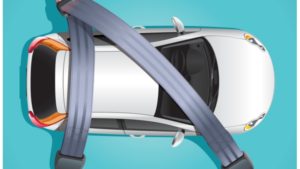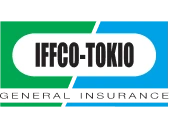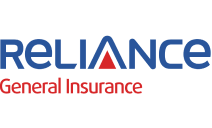
A car insurance policy is a must if you wish to drive your car in India. The Motor Vehicles Act, 1988 mandates a third party policy on every car which is running on Indian roads. Though the third party policy fulfils the legal requirement, it has a limited scope of coverage. It does not cover the damages suffered by the car itself which also incurs considerable financial costs. This is where a comprehensive car insurance policy comes into the picture. A comprehensive car insurance policy provides an inclusive scope of cover which covers both third party legal liabilities as well as the damages suffered by the car itself. Moreover, comprehensive car insurance plans also have optional add-ons which help in enhancing the scope of coverage further. One such add-on, offered by a comprehensive car insurance policy, is Return to Invoice Cover. Let’s understand what return to invoice is –
What is Return to Invoice(RTI) cover?
Return to invoice cover is an add-on cover which enhances the claim payable under the car insurance plan if the car is stolen or if it is damaged beyond repair. Under the cover, in case of constructive total loss or theft of the car, the invoice value of the car is paid as claimed. Thus, the return to invoice cover bridges the difference between the Insured Declared Value (IDV) of the car insurance policy and the invoice value of the car and pays a higher claim to policyholders.
How does return to invoice(rti) insurance work?
When you buy a car insurance policy and choose the return to invoice cover with the basic comprehensive cover, the add-on becomes effective. Thereafter, if your car suffers a constructive total loss where it is beyond repairs or if the car is stolen, the invoice value of the car is paid as claimed.
Return to invoice vis-à-vis Insured Declared Value (IDV)
After you buy a car, its value starts depreciating as it ages. Thus, under a comprehensive car insurance policy, the coverage limit of the policy is calculated after considering the depreciated value of the car. The coverage level of a car insurance policy is called the Insured Declared Value (IDV) and it is calculated as the ex-showroom price of the car less depreciation. The ex-showroom price of the car does not include the registration charges and road tax that you pay on the car. Moreover, with every passing year, the rate of depreciation on the car increases and the IDV reduces. In case of total loss or theft of the car, the applicable IDV is paid as a claim which is quite lower than the actual price paid for buying the car.
Invoice value of the car, on the other hand, is calculated by adding the ex-showroom price of the car, registration charges and the road tax paid. In other words, it is the on-road price of the car less insurance cost. The invoice value of the car is, therefore, higher than the IDV of the car insurance policy. When you choose the return to invoice cover and the car is completely damaged or stolen, you get the invoice value of the car and not the IDV and thus you get a higher claim in your car insurance policy.
Comparison of a car insurance policy with return to invoice cover and without
The afore-mentioned difference between a return to invoice cover and IDV can be better explained with an example. Let’s assume that a car insurance policy is bought on a new car where the IDV is INR 5 lakhs and the invoice value of the car is INR 7 lakhs. Here’s how the policy would differ if the return to invoice cover is availed in one instance and if the cover is excluded in the other –
| Policy with return to invoice cover | Policy without return to invoice cover |
| IDV of the policy would be INR 6 lakhs | IDV of the policy would be INR 6 lakhs |
| The premium of the policy would be higher because an additional premium would be paid for choosing the return to invoice cover | The premium of the policy would be lower because the return to invoice cover is not chosen |
| In case of theft or total loss of the car, IDV would be paid which is INR 5 lakhs after deducting the market value of the car with age-based depreciation | In case of theft or total loss of the car, the invoice value of the car would be paid which is INR 7 lakhs. The depreciation of the car due to its age would not be considered |
| The policyholder would suffer a loss of INR 2 lakhs because the cost of the car was higher than the claim received | The policyholder would not suffer any financial loss as he/she would get the cost of the car compensated by the return to invoice cover. The policyholder can, therefore, easily buy a new car to replace the old one |
| The road tax and registration charges paid on the car would not be compensated by the car insurance policy | The road tax and registration charges paid on the car would be compensated by the return to invoice cover availed with the car insurance policy |
Benefits of return to invoice insurance cover
Choosing the return to invoice cover as an add-on with your car insurance policy is beneficial because of the following reasons –
- Better scope of coverage
If you opt for the return to invoice cover, you get a better scope of coverage in your car insurance policy. - Higher claim payment
In case of total loss of the car or theft, you get the invoice value of the car paid as claim. This value includes the registration charges paid as well as the road tax thereby enhancing the claim amount that you receive. - Beneficial in case of high-end cars
If you buy your dream luxury car after saving for it for many years, total loss or theft of the car would be a considerable financial loss. Though your car insurance policy would compensate you for the loss suffered, the IDV paid would be considerably lower than the cost of the car. In such cases, having a return to invoice cover is a blessing. The cover would pay you the invoice value of the car which is much higher than the IDV thereby reducing your financial loss and enabling you to replace the damaged luxury car with a new one.
Applicability of return to invoice add-on
Here are some instances wherein you can choose to buy the return to invoice add-on and where the add-on would work –
- The return to invoice add-on would be available for cars which are up to 5 years old. Some insurance companies restrict the coverage for cars up to 3 years old too. So, compare the available car insurance plans to find out the maximum age of the car for which the return to invoice add-on is allowed by the insurance company.
- The return to invoice cover works only in cases of theft of the car
- If the car suffers total constructive loss which is beyond repair, the return to invoice add-on would be applicable. The car can be damaged in a fire, natural calamity or man-made calamities or accidents.
Non-applicability of return to invoice cover
The return to invoice add-on would not work in the following situations –
- If your car is 5 or more years old, the add-on would not be available
- If you suffer a partial damage which can be repaired, the return to invoice cover would not be applicable
- If the vehicle is stolen but you don’t file a police FIR, the claim would not be admissible. In such cases, the return to invoice add-on would not be applicable
- If you suffer a third party claim, return to invoice add-on would not be applicable
Return to invoice vis-à-vis zero depreciation
When it comes to choosing add-ons, a car insurance policy provides a range of add-ons to choose from. Besides the return to invoice add-on, another popular add-on is the zero depreciation cover which also enhances the claim payable by nullifying the effect of depreciation on the parts of the car. While both return to invoice and zero depreciation are popular add-ons which enhance the scope of coverage, they are quite different from one another. So, let’s understand the similarities and differences between these two add-ons –
Similarities between return to invoice and zero depreciation add-on
- Both add-ons enhance the claim amount
- Both add-ons are available on cars up to 5 years old
- Both add-ons require an additional premium
Differences between return to invoice and zero depreciation add-on
The differences between return to invoice and zero depreciation add-ons can be understood from the following table –
| Return to invoice add-on | Zero depreciation add-on |
| It is applicable in case of total loss or theft of the car | It is applicable in case of damages suffered by the car which are repairable |
| The add-on bridges the gap between the invoice value of the car and the IDV of the car insurance policy | The add-on bridges the gap between the actual cost of a car’s part and its depreciated value |
Cost of return to invoice add-on
Being an optional add-on, the return to invoice cover comes at an additional premium. The actual cost of availing the add-on depends on the insurance company and its pricing policy. However, generally, the return to invoice add-on involves an additional premium of 10%. This means that if the basic comprehensive car insurance policy costs INR 100 without the return to invoice add-on, by choosing the return to invoice add-on you might be required to pay INR 110.
Who should choose return to invoice?
The return to invoice add-on should be chosen by individuals who –
- Have bought an expensive car and cannot bear the loss in case of theft or total loss of the car
- Live in an area where car thefts are common
- Have bought a new car and want a complete protection on it
- Live in an area where damages to the car can be severe. For instance, in earthquake prone areas, the car can be damaged severely
- Use their cars frequently for long commutes and, therefore, face a higher probability of accidents
The return to invoice insurance cover is a valuable addition to your car insurance policy if you have invested in a brand new car. At a small additional premium you can get comprehensive cover for your car which would compensate you for the cost of buying the car in case your car is damaged beyond repairs or is stolen.
Frequently Asked Questions
- How is IDV calculated?
IDV is calculated by deducting the market value of the car with depreciation based on the car’s age. The rate of depreciation is as follows –Age of the car Applicable depreciation Up to 6 months 5% More than 6 months but up to one year 15% More than one year but up to 2 years 20% More than 2 years but up to 3 years 30% More than 3 years but up to 4 years 40% More than 4 years but up to 5 years 50% For cars aged 5 years and above, the IDV is decided mutually between the insurance company and the policyholder.
- If I add accessories to the car, would their value be covered under the return to invoice cover?
No, the value of additional accessories is not covered under the return to invoice add-on. Only the invoice value of the car would be covered which excludes the value of accessories. - Are other add-ons available if the return to invoice add-on has been selected?
Yes, you can opt for as many add-ons as you want even after choosing the return to invoice add-on. - What is the coverage duration of return to invoice?
The return to invoice add-on is applicable for a period of one year. After the year is completed, you would have to choose the add-on again when renewing the policy. - I am buying third party coverage for my car as I use the car sparingly. Can I buy the return to invoice add-on with the policy?
No, return to invoice cover is available only with comprehensive car insurance plans. If you are buying only a third party liability policy, you would not get the return to invoice add-on with it.




























